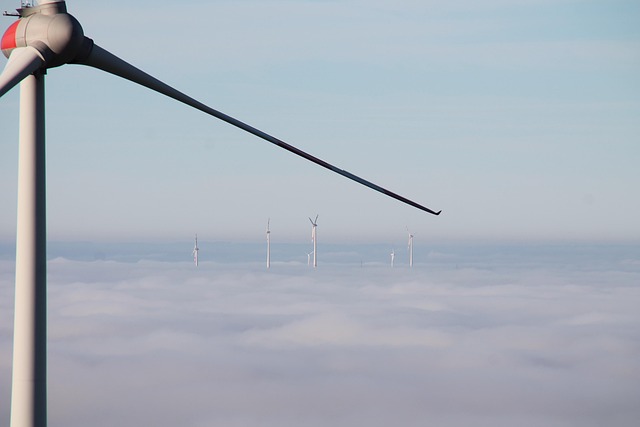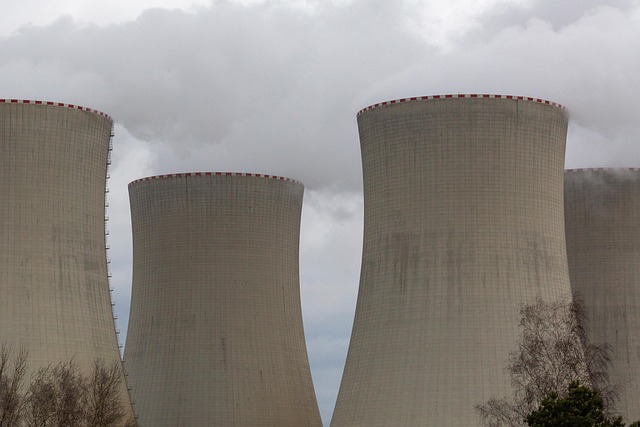Navigating the Transition: From Conventional to Renewable Power
As the world grapples with the looming threat of climate change, the transition from conventional energy sources to renewable power has become not just a trend, but a necessity. This shift is ushering in a new era of energy consumption, extraction, and generation that seeks to reduce carbon footprints and foster sustainable practices. In this article, we will explore the various aspects of this transition, including the driving forces behind the change, the technologies available, the challenges ahead, and the implications for economies and communities around the globe.
The Driving Forces Behind the Transition
Several key factors are fueling the transition from conventional to renewable energy sources. These factors can largely be categorized into environmental, economic, and technological influences.
Environmental Concerns
The escalating impacts of climate change are perhaps the most significant drivers of the shift towards renewable energy. The burning of fossil fuels has led to increased greenhouse gas emissions, contributing to global warming, rising sea levels, and extreme weather patterns. As scientific evidence mounts, governments and organizations are recognizing the urgent need to mitigate these effects by reducing dependency on fossil fuels.
Economic Factors
Renewable energy technologies have seen dramatic reductions in cost over the past decade. Solar power, wind energy, and other renewables have become more economically viable solutions compared to their conventional counterparts, making it an attractive choice for investors and consumers alike. Additionally, the renewable energy sector has the potential to create millions of jobs, fueling economic growth while providing clean energy solutions.
Technological Advancements
Technological innovation has played a crucial role in the transition to renewable energy. Advancements in solar panels, wind turbines, and energy storage solutions have led to greater efficiency and reduced costs. Innovations in smart grid technology further optimize energy distribution, enabling even more effective integration of renewable sources into existing power networks.
Understanding Renewable Power Sources
To fully appreciate the transition to renewable energy, it’s essential to understand the various types of renewable power sources available today. Renewable energy can broadly be classified into several categories:
Solar Energy
Solar energy harnesses sunlight using photovoltaic cells and solar thermal systems. As one of the most abundant energy sources, solar power is continuously becoming more efficient and accessible, with residential and commercial installations growing rapidly.
Wind Energy
Wind power captures the kinetic energy produced by wind using turbines. This form of renewable energy is particularly effective in areas with high wind potential and has experienced significant growth due to technological advancements that increase turbine efficiency.
Hydropower
Hydropower utilizes flowing water to generate electricity. It is one of the oldest forms of renewable energy, but scaling it sustainably can present challenges, such as environmental disruptions in aquatic ecosystems.
Biomass
Biomass energy is derived from organic materials, such as agricultural waste and wood. It can be used for heating, electricity generation, and even as fuel for vehicles. While biomass can be considered renewable, its sustainability greatly depends on harvesting and production methods.
Geothermal Energy
Geothermal energy uses heat from the Earth’s inner layers to generate electricity and for direct heating applications. It is a stable and reliable source of power but is location-dependent, often requiring specific geological conditions.
Challenges in the Transition
Despite the advantages and necessity of transitioning to renewable energy, several challenges must be addressed to ensure a smooth and effective switch from conventional power sources.
Infrastructure Development
The existing power infrastructure was designed with fossil fuels in mind, making it challenging to integrate renewable sources. Significant investment is needed to develop smart grids that can handle the decentralized and variable nature of renewables, ensuring reliability and efficiency in energy distribution.
Energy Storage Solutions
The intermittent nature of some renewable energy sources, especially solar and wind, poses a significant challenge. When the sun isn’t shining or the wind isn’t blowing, energy storage solutions, like batteries and pumped hydro storage, must be developed to ensure a consistent energy supply.
Regulatory Hurdles
Government policies and regulations can either support or hinder the transition to renewable energy. Inconsistent regulatory environments, along with entrenched interests in fossil fuel industries, can create obstacles that impede the uptake of renewables. Policymakers must find ways to incentivize the transition while addressing concerns related to jobs and economic shifts.
Public Perception and Education
Changing public perception regarding renewable energy is essential. Misinformation, skepticism about climate change, and reluctance to abandon traditional energy sources can hinder the transition. Greater public education about the benefits and feasibility of renewables can help foster acceptance and support.
Benefits of Transitioning to Renewable Energy
Transitioning from conventional energy sources to renewable power harbors a multitude of benefits for the environment, economy, and society.
Reducing Environmental Impact
The most prominent advantage of renewable energy is its potential to reduce greenhouse gas emissions and other pollutants. The shift to cleaner energy sources can significantly lower the negative impacts of climate change and improve air quality, leading to better health outcomes for the population.
Energy Independence
Renewable energy sources can enhance energy security and reduce dependence on imported fossil fuels. By harnessing local resources, nations can stabilize their energy supply and improve resilience against geopolitical tensions and market fluctuations.
Job Creation and Economic Growth
Transitioning to renewable energy not only creates jobs in new sectors but also stimulates grater investment in local economies. The growth of renewable energy industries can foster entrepreneurship and spur technological advancements, opening new avenues for economic development.
Community Empowerment
Renewable energy initiatives, like community solar projects, empower local communities to take control of their energy production. This grassroots involvement fosters social cohesion, enhances awareness of energy consumption, and can improve living standards.
The Path Forward
While challenges are present, the path forward is paved with opportunities for innovation, cooperation, and growth. Governments, businesses, and individuals must work collaboratively to make the transition as smooth and effective as possible.
Policy Frameworks and Initiatives
Governments play a crucial role in facilitating the transition to renewable energy. Implementing favorable policies, such as tax incentives, subsidies, and renewable portfolio standards, can encourage investment in clean energy technologies.
Investment in Research and Development
Increased funding for R&D can spur innovation in energy technologies, leading to improved energy efficiency and new sustainable solutions. Collaborative efforts between governments, private enterprises, and academic institutions can provide the necessary momentum for breakthroughs in renewable energy capabilities.
Community and Stakeholder Engagement
Building a broad coalition of stakeholders, including local communities, industries, non-profits, and governments, is essential for ensuring that the needs and concerns of all parties are addressed during the transition. Employing fair and inclusive practices will ease the social impact of change while enhancing public support.
International Cooperation
The global nature of climate change necessitates multinational collaboration in transitioning to renewable energy. Countries must share best practices, technologies, and financial resources to expedite progress. Participation in international agreements, such as the Paris Agreement, can provide a framework for collective action.
Conclusion
Transitioning from conventional power to renewable energy represents a critical path to achieving a sustainable and resilient future. Driven by environmental, economic, and technological factors, this shift is essential for mitigating climate change while fostering economic growth and public health. Although the journey ahead is fraught with challenges, it is also rich with opportunities for innovation and societal advancement.
As individuals, communities, and nations increasingly prioritize renewable energy solutions, the global energy landscape will undoubtedly evolve, creating a cleaner and more sustainable environment for generations to come. The transition requires the collaborative efforts of all stakeholders to overcome obstacles and harness the myriad benefits that renewable energy sources offer.



